You are using an out of date browser. It may not display this or other websites correctly.
You should upgrade or use an alternative browser.
You should upgrade or use an alternative browser.
Vmax and Baby Vmax
- Thread starter cyclehoarder
- Start date
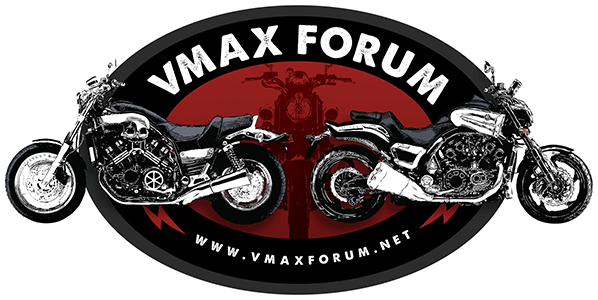
Help Support VMAX Forum:
This site may earn a commission from merchant affiliate
links, including eBay, Amazon, and others.
The Beekeeper
Well-Known Member
Nice looking pair of Yammies!!..............:worthy:..............Tom.
davesax36
Well-Known Member
I really like the Fazer.
sdt354
Well-Known Member
A sweet pair of rides.
cyclehoarder
Well-Known Member
Thanks!

$16.19
$17.99
MELASA Fleece Lined Winter Cycling Beanie with Holes for Glasses - For Men, Women
HNXCHUANG
cyclehoarder
Well-Known Member
I would like to find a Fazer to compliment my vmax some day.
They are out there, we looked at a bunch the last couple of years before we found one this nice. Loving it, sweet little fast bike!
2WHEELFREAK
Member
Nice! In '86 I bought a brand new '86 Honda VFR750 Interceptor and from what I remember it was THE 750-series sportbike to have at the time. A buddy of mine bought a new Fazer......and I'll be honest - in a straight-line battle I couldn't get away from that Fazer.......those bikes are FAST and were way underrated back then.
sergioalex
Member
- Joined
- May 1, 2021
- Messages
- 5
- Reaction score
- 7
Hi cyclehoarder and all forum members!
I am Sérgio, from Portugal and I own a Yamaha FZX 750.
Your photos of these two fantastic bikes are awesome and two details caught my eyes... The radiator grill and the customized seat of the Fazer (FZX here in Europe). Did the bike already have them when you bought it or did you added them after? Could you tell me how did you get them?
Thanks and lots of good and safe rides!
Sérgio
- Joined
- Apr 19, 2021
- Messages
- 690
- Reaction score
- 447
Hello Sergio. Welcome to the Forum. I just joined here a few days ago myself. I ride a 1985 Vmax 1200. I think those posts are over 3 years old...Hi cyclehoarder and all forum members!
I am Sérgio, from Portugal and I own a Yamaha FZX 750.
Your photos of these two fantastic bikes are awesome and two details caught my eyes... The radiator grill and the customized seat of the Fazer (FZX here in Europe). Did the bike already have them when you bought it or did you added them after? Could you tell me how did you get them?
Thanks and lots of good and safe rides!
Sérgio
desert_max
Well-Known Member
That’s OK, we appreciate the baby Vmax here as well...Or as Sergio would say the FZX!
Welcome Sergio. Look around, I think you’ll like it.
Welcome Sergio. Look around, I think you’ll like it.
one2dmax
Well-Known Member
I have some Fazer seat mods available and mostly for our US guys. I can get you in contact for the Euro market for them. Not sure about the Fazer but if you did up a dwg with measurement and font size we could probably get you a lazer cut one too. I bet the Euro guys have some though too!
We do have brake upgrade kits for the Vmax which some also work on the Fazer!
We do have brake upgrade kits for the Vmax which some also work on the Fazer!
sergioalex
Member
- Joined
- May 1, 2021
- Messages
- 5
- Reaction score
- 7
Hi Ole!Hello Sergio. Welcome to the Forum. I just joined here a few days ago myself. I ride a 1985 Vmax 1200. I think those posts are over 3 years old...
Thanks for your kind words.
Yes, I realized the date on the posts, but it's not so much time... Isn't cyclehoarder an active member anymore...?
I've got my FZX750 more than 17 years ago and still ride it today! More details about my bike on a next post...
sergioalex
Member
- Joined
- May 1, 2021
- Messages
- 5
- Reaction score
- 7
Hello desert_max!That’s OK, we appreciate the baby Vmax here as well...Or as Sergio would say the FZX!
Welcome Sergio. Look around, I think you’ll like it.
I've got my FZX750 back in 2003 and still ride it today. The first owner bought it in 1997, but it's a model made for the European market in 1993.
Back then I thought to buy a VMAX, but besides more expensive, it is a much heavier and more powerful bike for me... I'm just 1,65 m and weigh about 65 kg. The FZX is indeed a very good bike! Great engine, very powerful and great looking too! I think that instead of 'Baby VMAX' it should be named 'teenage VMAX', because the difference is not so much, I think...
Here you have pictures of it in front of a VMAX of a riding buddy:



Regards and stay and ride safe!
Sérgio
sergioalex
Member
- Joined
- May 1, 2021
- Messages
- 5
- Reaction score
- 7
Hi one2dmax!I have some Fazer seat mods available and mostly for our US guys. I can get you in contact for the Euro market for them. Not sure about the Fazer but if you did up a dwg with measurement and font size we could probably get you a lazer cut one too. I bet the Euro guys have some though too!
We do have brake upgrade kits for the Vmax which some also work on the Fazer!
Thanks for your answer.
In France there is Top Sellerie and here in Portugal JN seats too. Both transform the seats for many models, but they are not equal to the one on cyclehoarder's photos. Top Sellerie uses stitching for the logos and letters, but the seat from the cyclehoarder is amazing!
I think the Fazer from the US is almost exactly equal to the FZX750 in Europe. They were made for the US market with a bit smaller engine displacement due to the taxes policy in your country. Besides that, they share almost the same parts, seat too. You can see here the part numbers are exactly the same:
https://www.cmsnl.com/yamaha-fzx700-1986-fazer-usa_model9224/double-seat-assy_1uf2473000/https://www.cmsnl.com/yamaha-fzx750...351f1_model38436/double-seat-assy_1uf2473000/
Regards and stay and ride safe!
Sérgio
I think a more-appropriate name for the Fazer/FZX based upon the design of the engine, would be the baby FZR. Both (Fazer/FZX and the FZR 1000) are severely-inclined forward, inline fours with downdraft carburetion, and despite spotting the VMX-12 VMax about 25% more displacement, the five-valve Genesis FZR 1000 engine actually out-powers the VMax, and is a bit over 470 lbs, vs the VMax at 590 lbs., so ~20% lighter. Given those statistics, it's easy to surmise who wins that contest. The FZR 750 was the same chassis and etc as the FZR 1000, just a smaller engine, for Superbike class racing in the AMA (it came with better forks and rear monoshock, -Ohlins-and was actually more-expensive than the FZR 1000). One advantage the FZR 750 had, was a six-speed gearbox, but the factory eliminated the six-speed for the larger bike, because of longevity, as the five gearsets could be made wider than six, in the same case. Some people have fitted the six-speed gearset into the FZR 1000. I still have an FZR 1000, 1987 model, I bought from a friend in '88. He was the original owner.
The FZR 1000 was a 'first' for Yamaha and the industry. While there were bikes with aluminum frames before this, the FZR 1000 was the first production bike to have a perimeter box-section large-diameter hollow-beam aluminum frame. Compared to the Suzuki GSXR 750/1100 (attach. below), it made the Suzuki 'Slingshot' aluminum frame, appear puny by comparison. The FZR 750/1000 was also the first modern production bike to use five valves: three intake and two exhaust. This cut-down on valvetrain weight, and allowed more valve area and a higher rev-band redline. The FZR 750/1000 also ran radials, one of the first bikes to have this spec from Japan. The wheels were three hollow-spoke cast-aluminum, light, strong, and wide. The same design was used by premium aftermarket manufacturers for the top roadracing classes.
The FZR 1000 was also the detuned engine used in Yamaha's GTS 1000 sport-touring bike, which was I believe the only Japanese production bike to make-use of James Parker's RAAD front-end design. The Omega frame on that was ground-breaking in and of-itself, to accommodate the RAAD suspension. Think of it as being two swingarms, the one at the front capable of steering. Captain Kyle once had one of these. Yamaha cut the HP-output significantly from the FZR 1000's specs to use the engine in the GTS 1000. Actually, Yamaha followed a time-honored Japanese manufacturer tradition in the first-year engines-1987- for the FZR 1000. They gave it cams which produced class-leading HP. Bike magazines of the day made mention of how it would "come-on the cams, twice," as revs climbed. Japanese manufacturers were canny in their marketing. They knew that in the HP/performance game, the 'big-numbers' would sell bikes. Just ask any kid in 1969 who could scrape-together $999 for a Kawasaki H1 500cc 'Blue Streak' two-stroke triple cylinder, which was quicker than anything else on the road then. Sure a BSA Rocket III 750cc/Triumph Trident 750cc was more-comfortable, and nearly as-fast/quick, but to the guy whose mantra was, 'quickest stock bike,' there was no comparison.
Back to the Japanese tuning their first-year bikes for HP. That first-year FZR 1000 made more HP than that year's VMax. The second-year FZR 1000 made about 15 horsepower less-than its predecessor! WTF!!!??? I thought the idea was-to make 'big-horsepower?' Yamaha made a change to benefit where riders ride the most. They boosted mid-range HP output by an incredible 20 horsepower! That cost them some on top, but since most people don't spend but seconds topped-out near redline, this made the bike a monster in roll-ons and around-town use.
The GTS 1000 has become a favorite of bike customizers, because it's already 'out-there,' from a chassis design standpoint, especially once you strip-away the bodywork, and install some minimalist replacements. It becomes a 'Blade-Runner' style of bike, or something for fleeing from the Zombie Apocalypse, in those iterations. Futuristic, whether that is for the good, or for the bad (the latter, think World War Z).
Suzuki 'Slingshot'

FZR 1000 1987:

GTS 1000 Omega frame, and RAAD front suspension:



Scheffers Engineering GTS custom:

The bodylines on this remind me of the queen-mother Alien from Alien and Aliens:

The FZR 1000 was a 'first' for Yamaha and the industry. While there were bikes with aluminum frames before this, the FZR 1000 was the first production bike to have a perimeter box-section large-diameter hollow-beam aluminum frame. Compared to the Suzuki GSXR 750/1100 (attach. below), it made the Suzuki 'Slingshot' aluminum frame, appear puny by comparison. The FZR 750/1000 was also the first modern production bike to use five valves: three intake and two exhaust. This cut-down on valvetrain weight, and allowed more valve area and a higher rev-band redline. The FZR 750/1000 also ran radials, one of the first bikes to have this spec from Japan. The wheels were three hollow-spoke cast-aluminum, light, strong, and wide. The same design was used by premium aftermarket manufacturers for the top roadracing classes.
The FZR 1000 was also the detuned engine used in Yamaha's GTS 1000 sport-touring bike, which was I believe the only Japanese production bike to make-use of James Parker's RAAD front-end design. The Omega frame on that was ground-breaking in and of-itself, to accommodate the RAAD suspension. Think of it as being two swingarms, the one at the front capable of steering. Captain Kyle once had one of these. Yamaha cut the HP-output significantly from the FZR 1000's specs to use the engine in the GTS 1000. Actually, Yamaha followed a time-honored Japanese manufacturer tradition in the first-year engines-1987- for the FZR 1000. They gave it cams which produced class-leading HP. Bike magazines of the day made mention of how it would "come-on the cams, twice," as revs climbed. Japanese manufacturers were canny in their marketing. They knew that in the HP/performance game, the 'big-numbers' would sell bikes. Just ask any kid in 1969 who could scrape-together $999 for a Kawasaki H1 500cc 'Blue Streak' two-stroke triple cylinder, which was quicker than anything else on the road then. Sure a BSA Rocket III 750cc/Triumph Trident 750cc was more-comfortable, and nearly as-fast/quick, but to the guy whose mantra was, 'quickest stock bike,' there was no comparison.
Back to the Japanese tuning their first-year bikes for HP. That first-year FZR 1000 made more HP than that year's VMax. The second-year FZR 1000 made about 15 horsepower less-than its predecessor! WTF!!!??? I thought the idea was-to make 'big-horsepower?' Yamaha made a change to benefit where riders ride the most. They boosted mid-range HP output by an incredible 20 horsepower! That cost them some on top, but since most people don't spend but seconds topped-out near redline, this made the bike a monster in roll-ons and around-town use.
The GTS 1000 has become a favorite of bike customizers, because it's already 'out-there,' from a chassis design standpoint, especially once you strip-away the bodywork, and install some minimalist replacements. It becomes a 'Blade-Runner' style of bike, or something for fleeing from the Zombie Apocalypse, in those iterations. Futuristic, whether that is for the good, or for the bad (the latter, think World War Z).
Suzuki 'Slingshot'

FZR 1000 1987:

GTS 1000 Omega frame, and RAAD front suspension:



Scheffers Engineering GTS custom:

The bodylines on this remind me of the queen-mother Alien from Alien and Aliens:

Last edited:
sergioalex
Member
- Joined
- May 1, 2021
- Messages
- 5
- Reaction score
- 7
I think a more-appropriate name for the Fazer/FZX based upon the design of the engine, would be the baby FZR. Both (Fazer/FZX and the FZR 1000) are severely-inclined forward, inline fours with downdraft carburetion, and despite spotting the VMX-12 VMax about 25% more displacement, the five-valve Genesis FZR 1000 engine actually out-powers the VMax, and is a bit over 470 lbs, vs the VMax at 590 lbs., so ~20% lighter. Given those statistics, it's easy to surmise who wins that contest. The FZR 750 was the same chassis and etc as the FZR 1000, just a smaller engine, for Superbike class racing in the AMA (it came with better forks and rear monoshock, -Ohlins-and was actually more-expensive than the FZR 1000). One advantage the FZR 750 had, was a six-speed gearbox, but the factory eliminated the six-speed for the larger bike, because of longevity, as the five gearsets could be made wider than six, in the same case. Some people have fitted the six-speed gearset into the FZR 1000. I still have an FZR 1000, 1987 model, I bought from a friend in '88. He was the original owner.
The FZR 1000 was a 'first' for Yamaha and the industry. While there were bikes with aluminum frames before this, the FZR 1000 was the first production bike to have a perimeter box-section large-diameter aluminum frame. Compared to the Suzuki GSXR 750/1100, it made the Suzuki 'slingshot' aluminum frame, appear puny by comparison. The FZR 750/1000 was also the first modern production bike to use five valves: three intake and two exhaust. This cut-down on valvetrain weight, and allowed more valve area and a higher rev-band redline. The FZR 750/1000 also ran radials, one of the first bikes to have this spec from Japan.
Thanks you for the information, Fire-medic. Notwithstanding, the fairing is a big difference between both bikes!
Yes, strip-off the FZR fairing like the street-squids did after wrecking, because they couldn't afford-to replace it and the favorable comparisons between the two (FZX-FZR) are more-apparent.Thanks you for the information, Fire-medic. Notwithstanding, the fairing is a big difference between both bikes!
I think this is heresy, but this guy is free to-do what he wishes, it's a good experiment, still needing finishing: an electric FZR 1000:
Yamaha FZR-8000 Genesis - Endless Sphere (endless-sphere.com)

Last edited:
Similar threads
- Replies
- 5
- Views
- 395
- Replies
- 10
- Views
- 923
- Replies
- 23
- Views
- 2K



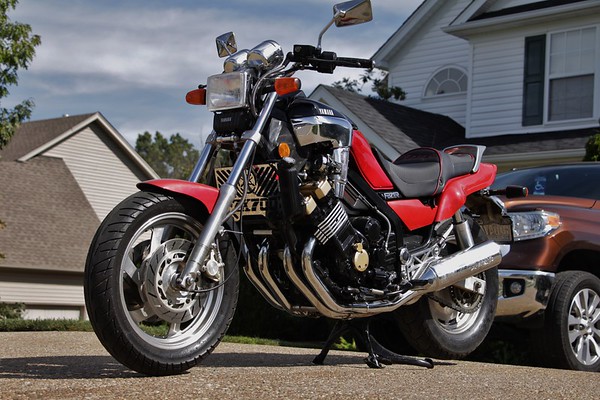
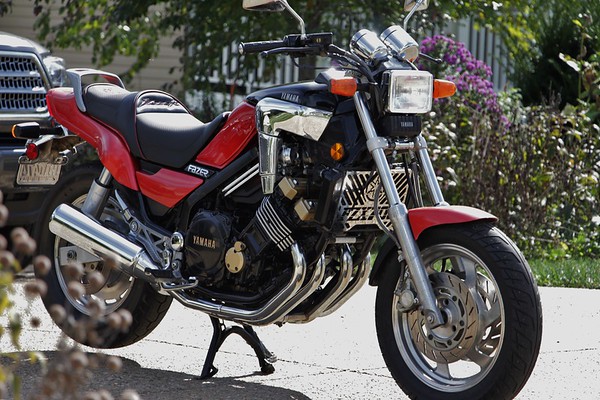
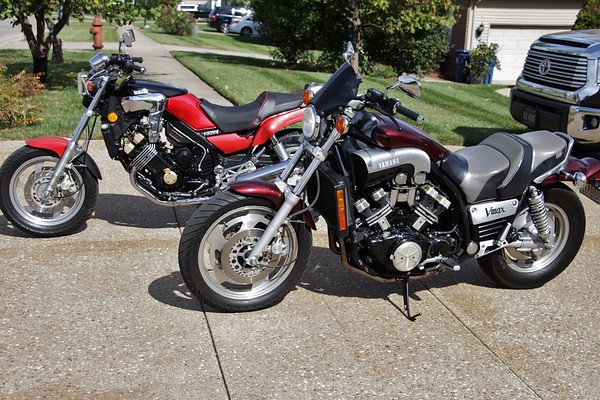
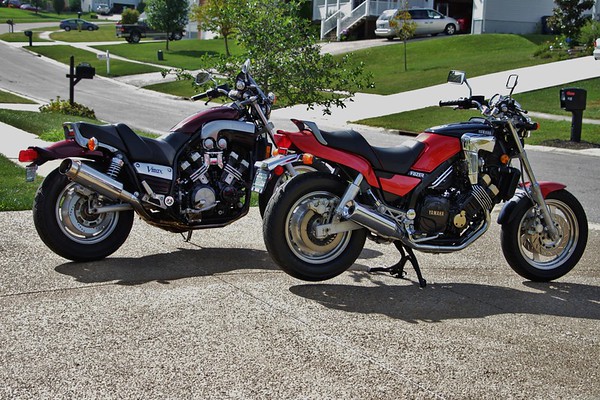


























![Bovemanx Motorcycle Phone Mount Holder, [150mph Wind Anti-Shake][7.2inch Big Phone Friendly] Bike Phone Holder, Motorcycle Handlebar Cell Phone Clamp, Compatible with iPhone 16 Pro Max Smartphones](https://m.media-amazon.com/images/I/51F+1sontPL._SL500_.jpg)


